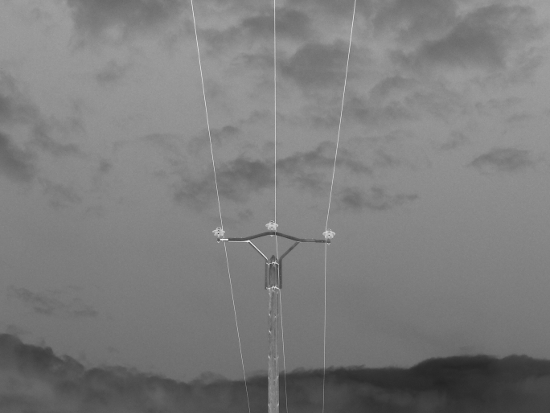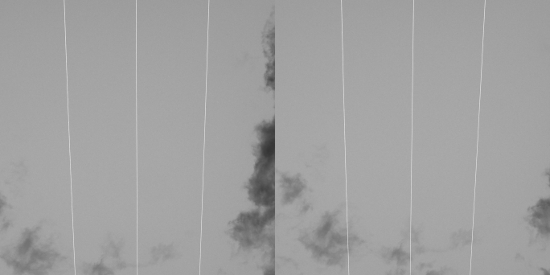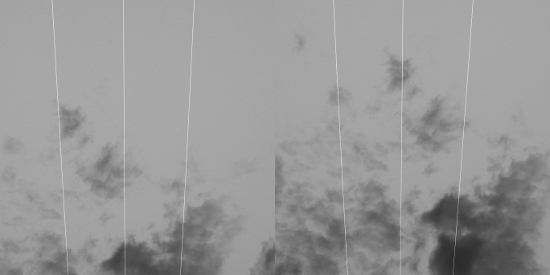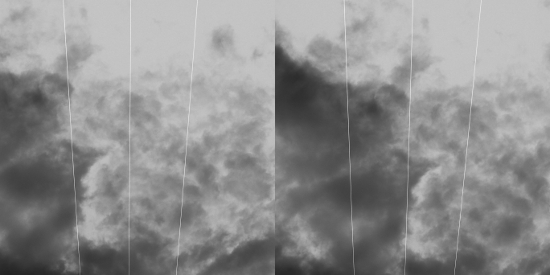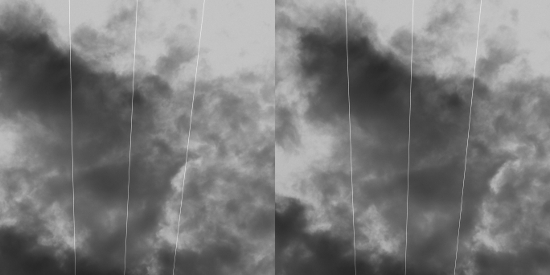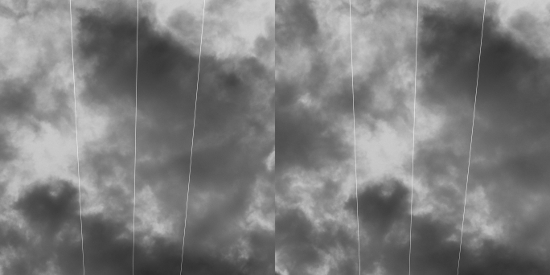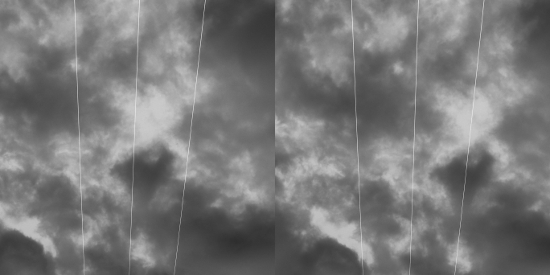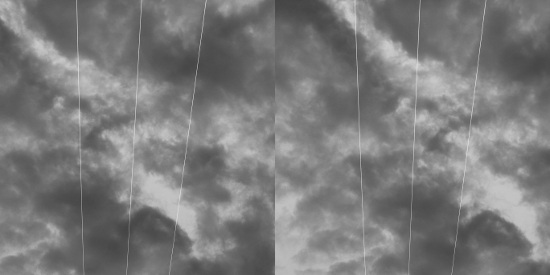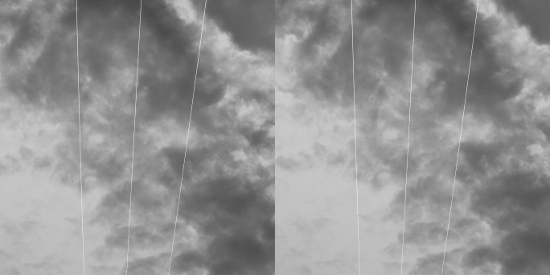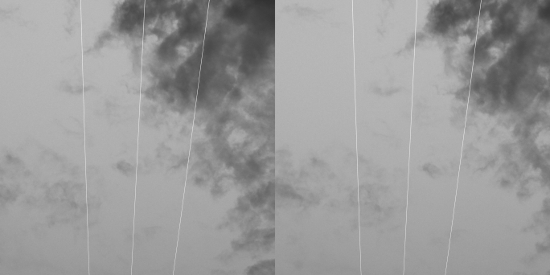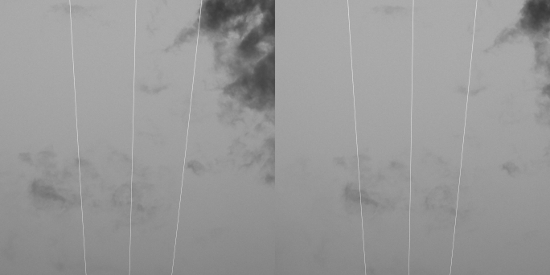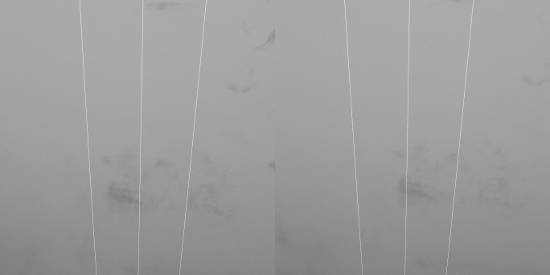project at www.under-construction.cc
| C |
Cloud ClocksConcept and Considerations Cloud clocks are kind of universal (not to say: a given entity), public open access alternate time pieces. Plus, for obvious reasons they are also directly connected to wind time (see ibid.). Moreover, they can be also classified as hazy clocks, for they are quite perfect for clocking Hazy Time (see ibid.) However, to read them you might like to use an additional installment providing you with a proper clock face. Basically, there are two kinds of clock face installments: "ready made" cloud clock faces based on given installments found in public space. Most convenient are i.e. high voltage power lines, for the parallel cables will offer a perfect grid scale for watching the movement of clouds from below.
The figure above shows an electricity pylon, the series of figures below documents an example for using the cables attached to the pylon as a "ready made" cloud clock face:
The most simple and easy DIY construction can be directly drawn from the "ready made" version shown above. All you need is a rectangular frame and wire, and to stretch three or more parallel strings of wire inside the frame. More advanced cloud clock faces are based on a circular form. For a stable construction you will first need to build a ring of a diameter big enough to look through face upwards while sitting on a chair or lying on the ground. The ring can be constructed from any material of choice (this will also depend on your tools and capabilities), be it wood, steel, glass, wire (preferably a thicker, yet elastic piece), prepared cardboard (note: needs to be prepared due to necessary resistance against humidity), or whatever you think is appropriate to use. Next step will be to apply four marks of 90 degrees distance to each other to the ring (90°, 180°, 270°, 360°/0°) for the four cardinal directions (North, East, South, West). For later installments of the clock you might then use a compass to calibrate your cloud clock by precisely orienting it on place/in space. Depending on your preferences you should last but not least also mount either three or four legs to properly install your cloud clock's clock face for convenient use. Now while this is the most basic version of a circular cloud clock, there are of course further developed models as well. One of these is the mobile cloud clock for travel, for which usually a smaller ring is used, with either retractable tripod legs or – for the pocket version – a single retractable grip. Meanwhile there have been developed also several advanced clocks based on the mobile cloud clock, like i.e. the Umbrella Clock (see ibid., work in progress). … Note: This article will be refined and illustrated as soon as possible. Thank you for your patience. Related: |


